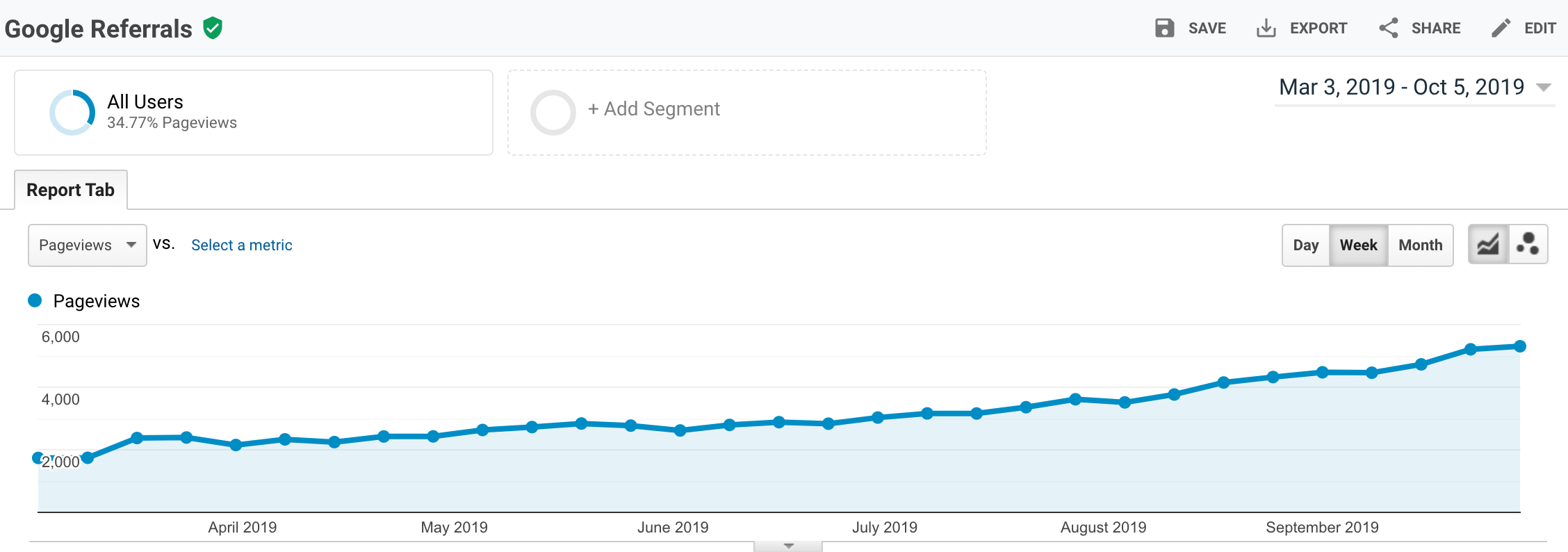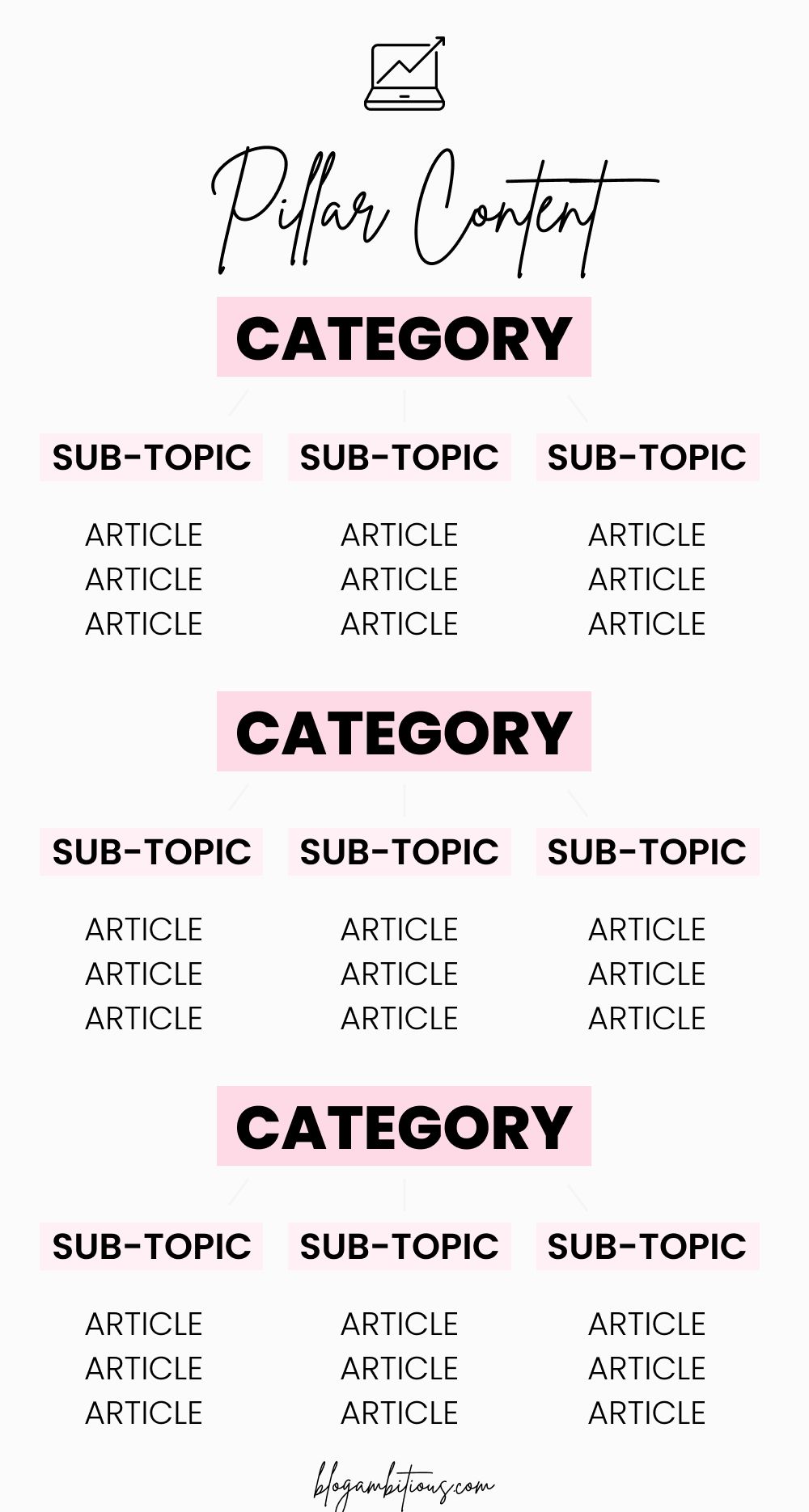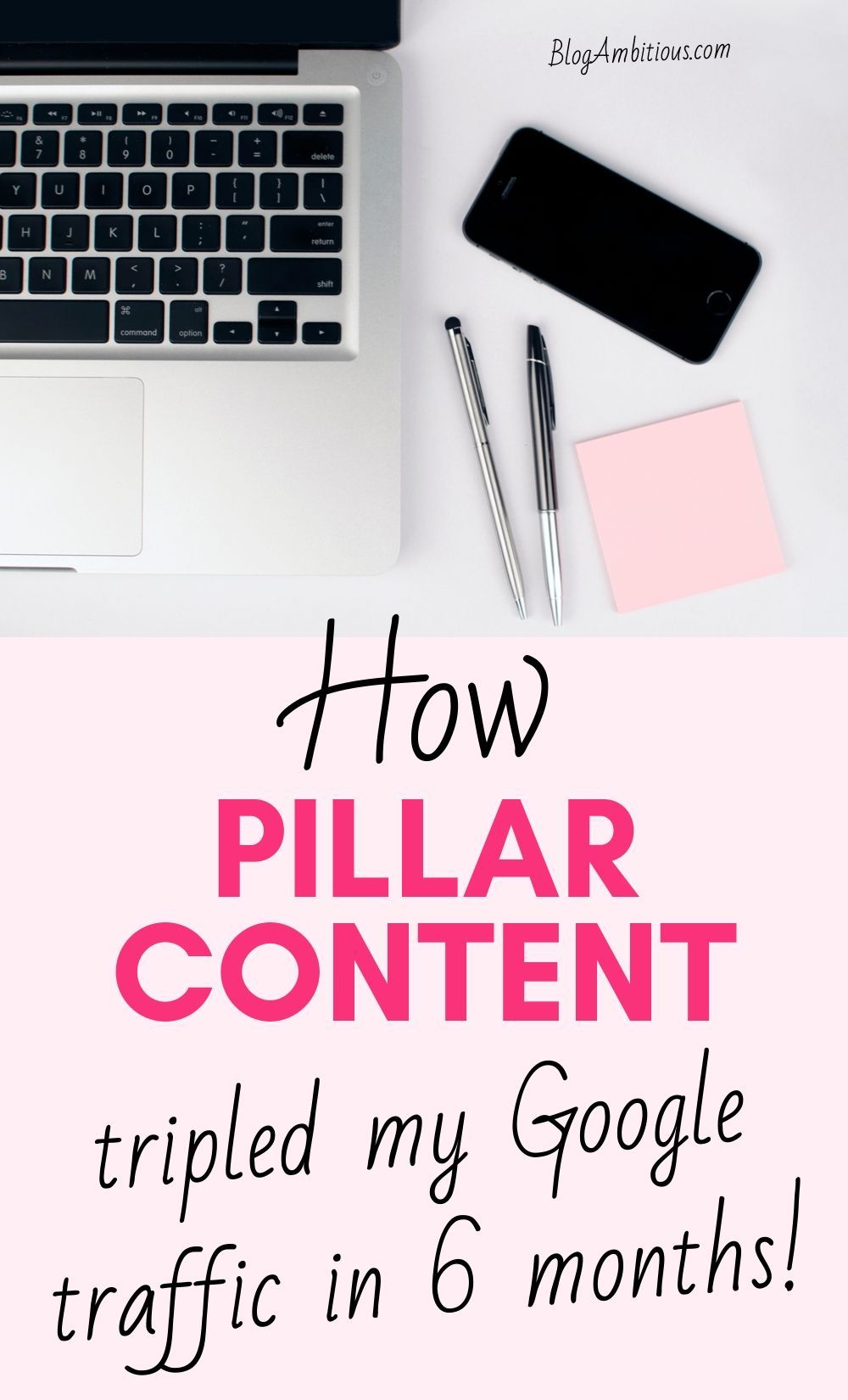After casually blogging for two years, I started to think about the “bigger picture” when it came to my blog. For too long, I was trying to think of the next best blog post that would go viral and bring me as many page views as possible. When you’re a new blogger, this isn’t a bad strategy, but at some point, you need to take a step back and plan for the future.
I started to think about where I want my blog to be in 5 years. What content must be included to make sure my blog is a helpful resource and not just a sporadic stream of various articles? How did each blog post relate to the next?
After doing some basic research, I came across a content strategy known as “pillar content.” Once I read about pillar content, I realized this is exactly the vague idea I had in mind for my blogs! I just didn’t know the name of it.
Using a pillar content strategy, you can transform your blog from a collection of articles into a resourceful website for readers – all while boosting your SEO.
You’ve probably come across websites that have been organized around pillar posts without even realizing it. I know I have!
These sites treat their blogs like encyclopedias, rather than personal journals.
How to Start Writing Pillar Content
I have been crafting pillar content intentionally for the last six months with great success. My Google traffic has consistently grown, even after two big algorithm changes where I noticed a lot of bloggers complaining about their traffic dipping.

My method is pretty simple: First, I wrote a list of the major categories my blog covers. These are high-level topics, and there shouldn’t be more than 7.
For each of these categories, I wrote as long of a post as I could about that topic. I ended up with articles that had over 1,000 words each. It feels silly to write these articles, but you must do it.
Decide on Your Categories
For example, let’s say your niche is beauty. You might have top-level categories like Skincare, Haircare, and Makeup. For each of those categories, you should write Pillar content like
- The Ultimate Guide to Skincare (with a slug of: skincare)
- 15 of our Best Haircare Tips (with a slug of: haircare)
- All the Makeup Essentials You Need to Be Beautiful (with slug: makeup).
You may think: why am I writing these generalized articles that likely no one will read because they are too general?
Ignore that!
These articles will be part of your cornerstone content: large, long-form articles that show Google you are an expert on this topic.
Write as if you’re speaking to someone who really doesn’t know much about this topic, even if it seems too basic for your readers. Go into detail, and explain things you feel like you learned 10 years ago.
Because guess what? Someone out there is learning it for the first time.
Create Sub-Topics
Once you have those top-level articles written, it’s time to go even further within each category.
So within the Skincare category, you might have sub-topics like Cleansers, Exfoliators, Toners, Lotions, Masks, and Make-up Removers.
For each of those sub-topics, you do the same thing and write high-level articles talking about these topics at a basic, but detailed level. So you might write articles like: Why are Exfoliators necessary? What do Toners actually do?
From there, depending on how in-depth your topic goes, you may wish to go another level within each category or stop there.
Here’s a quick graphic to illustrate how this looks:

Link Your Everyday Articles
Now, you can write more typical articles like 10 Best Exfoliators for Sensitive Skin, or 15 Cruelty-Free Toners We Love, and file them within those higher level categories. Make sure you have at least one low-level article for each topic within your sub-topic. You want to make sure you cover all your bases when it comes to that topic and things people would want to know about it. Remember, Pillar content is about positioning yourself as an expert on that topic and everything that has to do with it.
You then want to link your low-level articles like the ones mentioned within your Pillar content articles. This could be natural in-context linking, or it could be a list at the end of the pillar content. (“For more information about Skincare products, we recommend, check out the following posts:”). Personally, I prefer the former, but you can do as you like.
Conversely, your low-level articles should link back to the Pillar content article as well, when possible.
So every time you write about blush for pale skin, whether it’s a list or a review, you would link back to the Pillar content “Makeup” article.
That’s pretty much it! Don’t feel like you have to produce these pillar posts all at once. Write them on your own time, and you will see a difference in your Google traffic long term.
Create an excel spreadsheet or Asana task list of each your categories and check them off one by one at your own pace. From there, you should continue producing content, and updating and linking to/from your pillar content as necessary.


This is great! I’m just trying to figure out my blog categories right now (to simplify things) and this blog post was so helpful. Thank you!
Of course, happy to help Alexis!
Wow – a topic I never thought of or heard before. Now I have some work to do. Thank you so much!!
This was such a great article! Thank you for sharing and I have been doing a lot of research and building traffic for my blog as I just relaunched. Google has to recrawl my site since I just relaunched. I will definitely add this post to my to-do list for my blog.